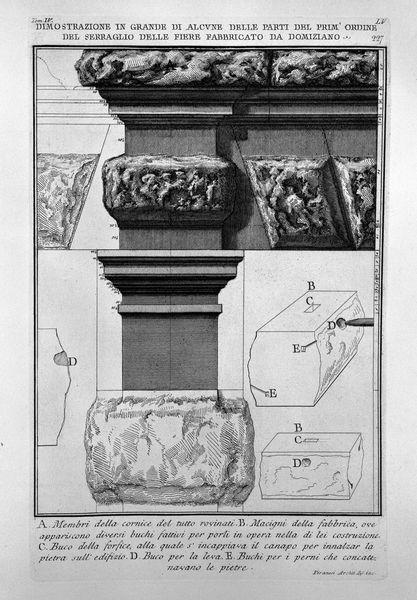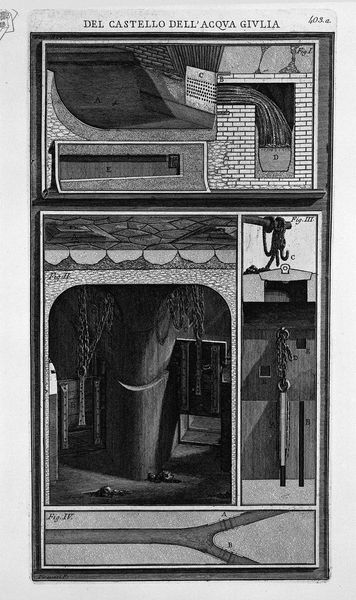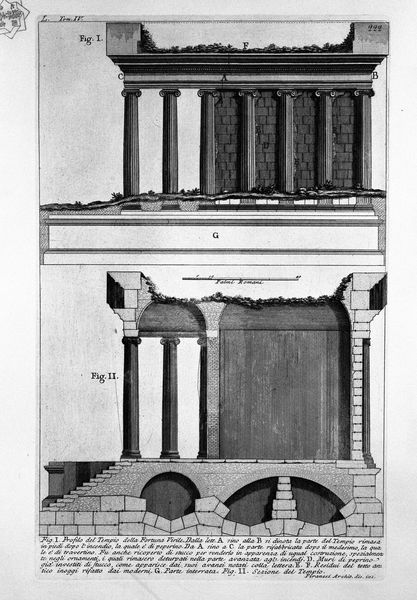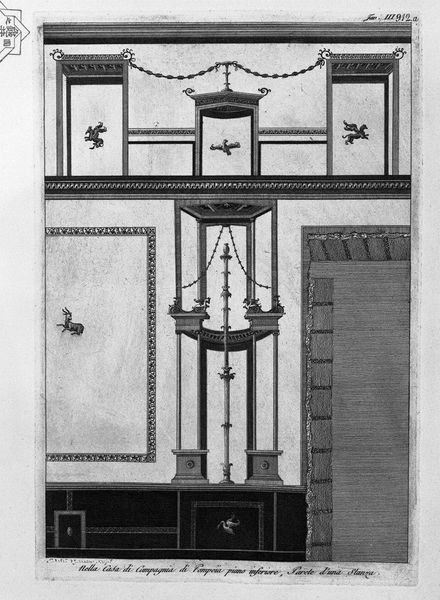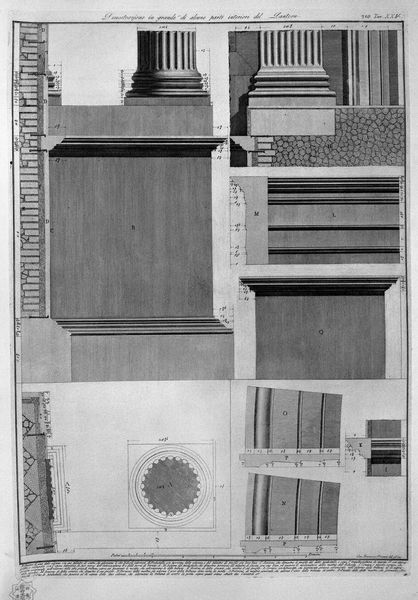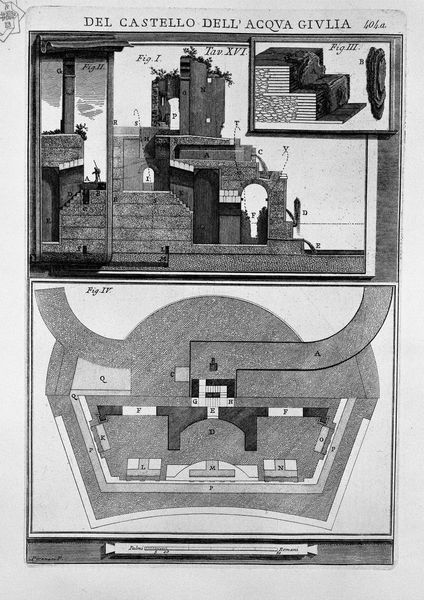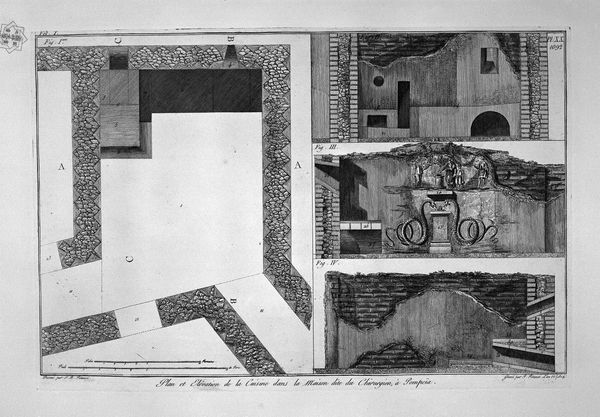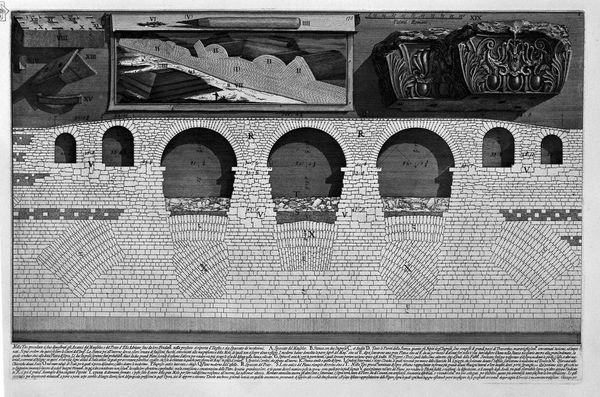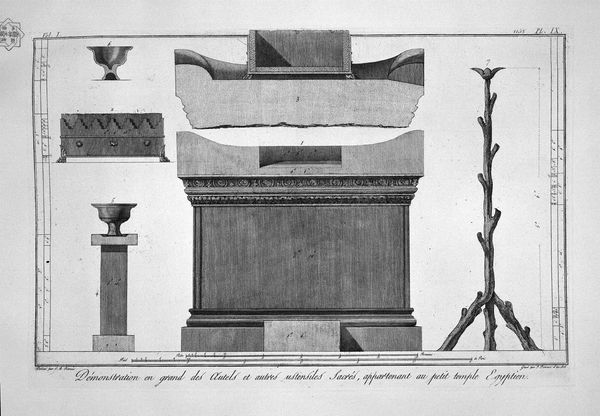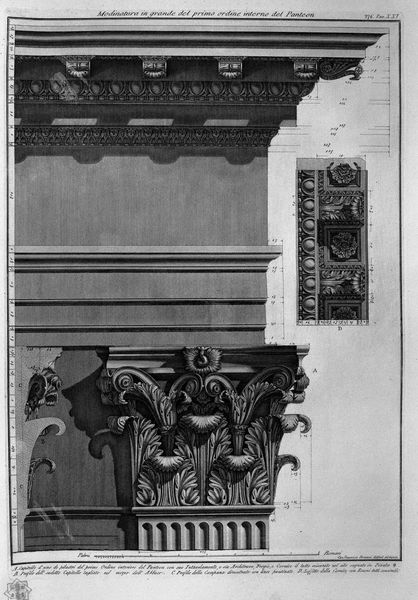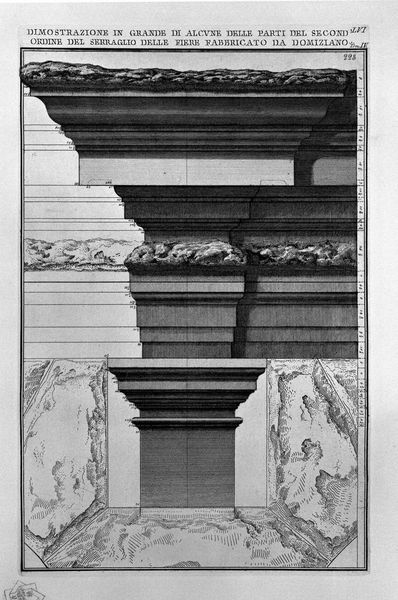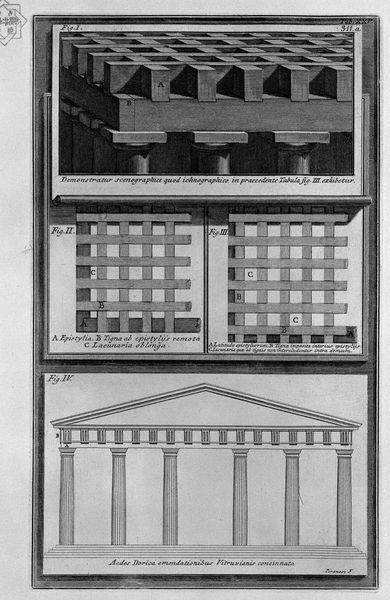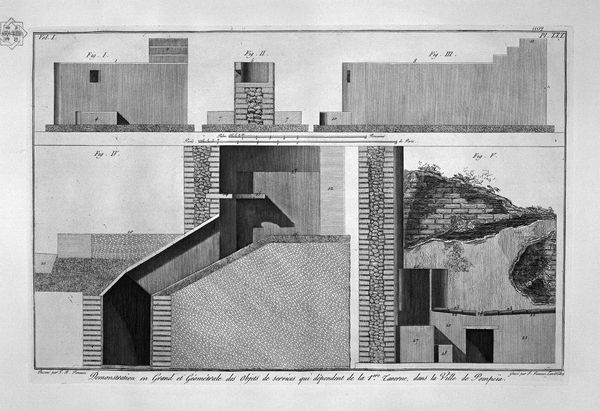
Prospectus outside the Monument of the neck cross-section of the Scipios` Sarcophagus of Scipio Barbato and of Cornelia Hall
0:00
0:00
drawing, print, engraving, architecture
#
drawing
# print
#
perspective
#
charcoal drawing
#
charcoal art
#
geometric
#
ancient-mediterranean
#
line
#
history-painting
#
charcoal
#
engraving
#
architecture
Copyright: Public domain
Curator: Here we have an engraving entitled "Prospectus outside the Monument of the neck cross-section of the Scipios' Sarcophagus of Scipio Barbato and of Cornelia Hall" by Giovanni Battista Piranesi. The plate presents us with multiple perspectives of an ancient Roman structure. What strikes you most about its composition? Editor: It’s incredibly diagrammatic, almost architectural in its precision, yet the dark washes and etched lines give it an intensely melancholic atmosphere. It feels more like a ghostly imprint than a celebration of Roman grandeur. Curator: Indeed, Piranesi's technique involves a sophisticated orchestration of line, tone, and perspective to produce what we might term an imagined archaeology. Note the cross-sections, elevations, and exploded views. These serve to dissect the Roman monument into its constituent parts. Editor: It’s this dissection that interests me. Piranesi's labor in etching these intricate details – all those minute, individual lines building up form – mirrors the actual labor involved in constructing these monuments originally. It’s a ghostly echo of the human effort embedded in the stone itself. Also the consumption of stone in roman architecture. Curator: An astute observation. The rigorous structure of the geometric shapes contrasts dramatically with the natural degradation time and the elements imposed to those structures. I’m referring particularly to the unearthing of something like a material "truth" through ruin, you see. Editor: Yes, that tension between meticulous planning and the brutal effects of time and use really adds another layer of meaning to me. We are meant to be standing outside. However we seem to be inside a technical illustration that exposes us the decay. We are confronting a ghost of something important. Curator: Well put. It offers a glimpse into Piranesi's own layered vision—he presents to us, with scholarly exactitude, a spectral dimension; an elegy to an ancient past. Editor: Precisely, in its depiction of ruin and fragmentation, as well as the labor it represents through each line of its composition, that we begin to appreciate its profound message about time, work, and the transience of material culture.
Comments
No comments
Be the first to comment and join the conversation on the ultimate creative platform.

